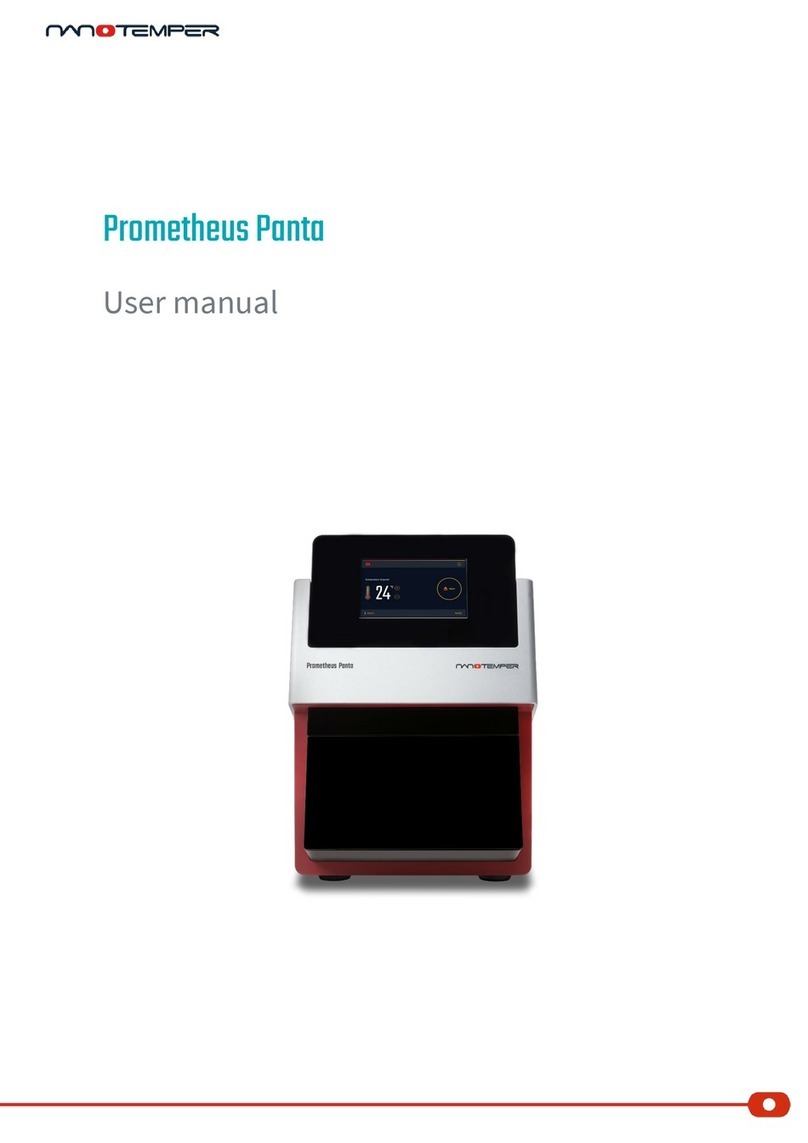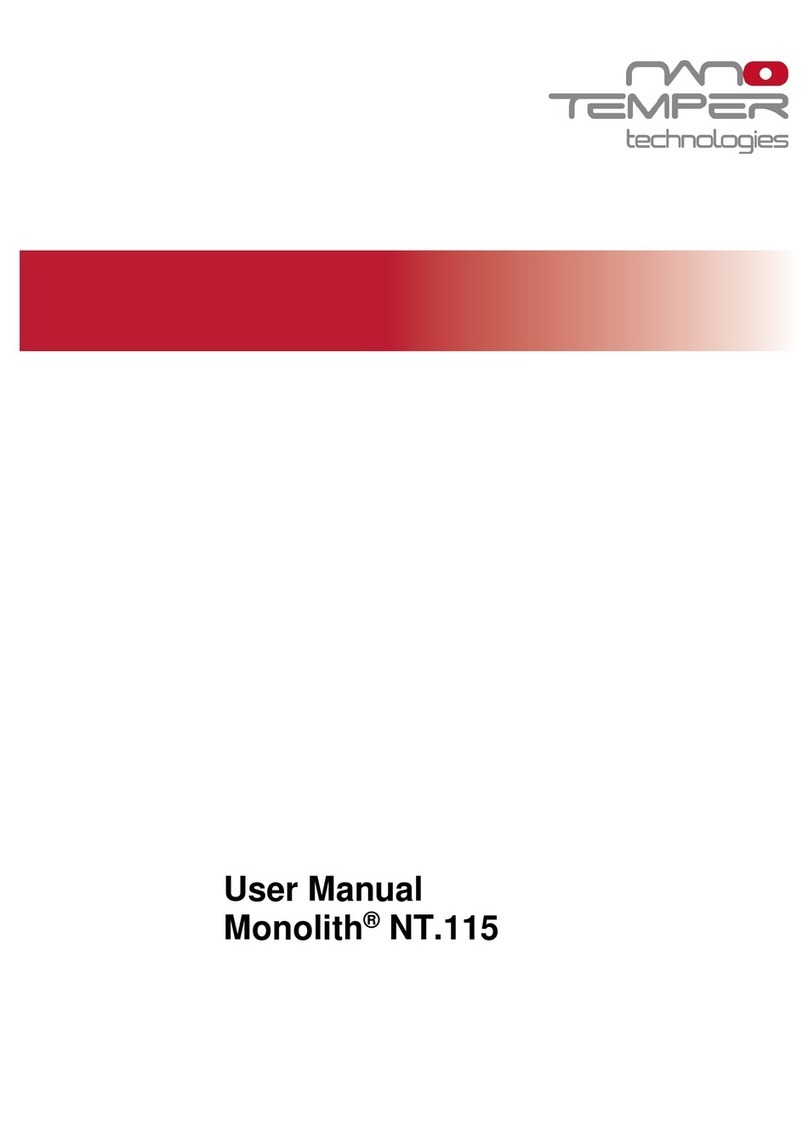4
WARNING! Operate the Prometheus Series instrument only with the provided external power
supply. Onlyuse the provided cables and plugs. Failure to comply mayresult in a risk of electric
shock and fire.
CAUTION The Prometheus Series instrument has to be installed in a way that does not hinder
access to the external power supply and its power plug.
CAUTION Connect the Prometheus Series instrument power supply in a way that avoids
tripping hazards.
CAUTION Do not use extension cords. Damaged cords, plugs or cables need to be replaced
immediately. Failure to comply may result in a risk of personal injury or damage to the
instrument.
WARNING! Do not operate the Prometheus Series instrument with substances or under
conditions that pose a risk of explosion, implosion or release of gases. Do not use the
instrument with hazardous or infectious substances.
CAUTION Use only aqueous samples for analysis in the instrument.
CAUTION The Prometheus Series instrument weighs approx. 30 kg. Two people are required
for transport. Moving the instrument alone entails a risk of personal injury or damage to the
instrument.
CAUTION Do not open the instrument manually or anywhere other than the sample loading
drawer. Opening entails a risk of personal injury or damage to the instrument and may only be
done by NanoTemper Technologies staff.
CAUTION Only NanoTemper Technologies staff may service the instrument. Turn off the
power switch and unplug the power cord before servicing the instrument, unless instructed
otherwise.
CAUTION The instrument contains a UV-LED. The UV-LED emits invisible ultraviolet radiation
(UVB radiation) when in operation, which may be harmful to eyes and skin, even at brief
periods of exposure. Donot look directly into theUV-LED during operation. If used as intended,
the instrument emits no UV radiation.
CAUTION Mechanical moving parts within the instrument can pinch or injure your hands or
fingers. Do not touch or open the instrument while parts are moving.
CAUTION The display pane is made of glass. Broken glass can injure your hands or fingers.
CAUTION The sharp edges of the Prometheus NT.Plex chipholder thermal element pose a
risk of injury to hands and fingers.
CAUTION The instrument contains a temperature regulator to control the sample temperature.
Some accessible parts of the instrument can reach temperatures of up to 60 °C. Don’t touch
the temperature controlled parts of the instrument when the temperature controller is set to
high temperatures.
CAUTION Do not use the instrument at ambient temperatures below 15 °C.





























